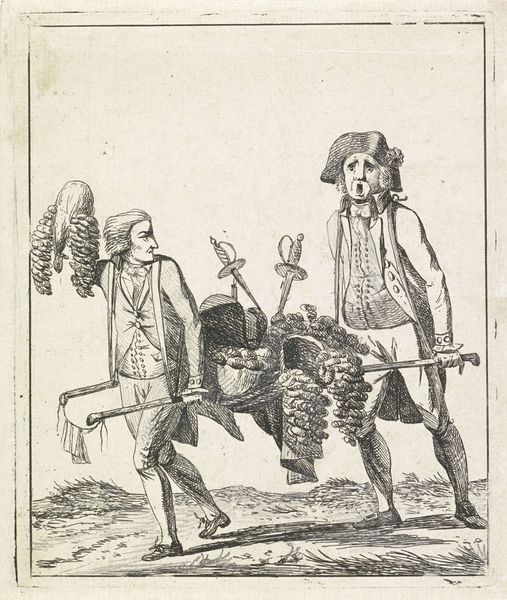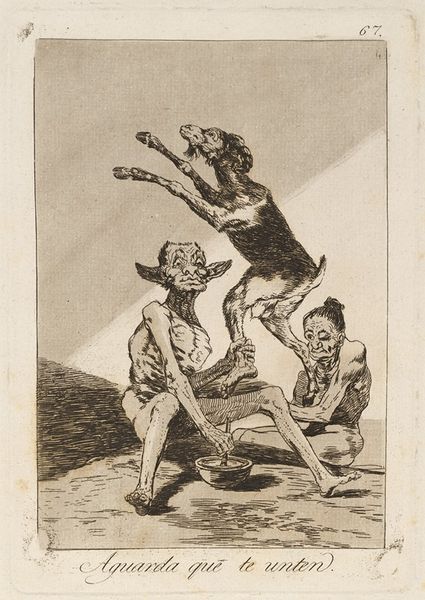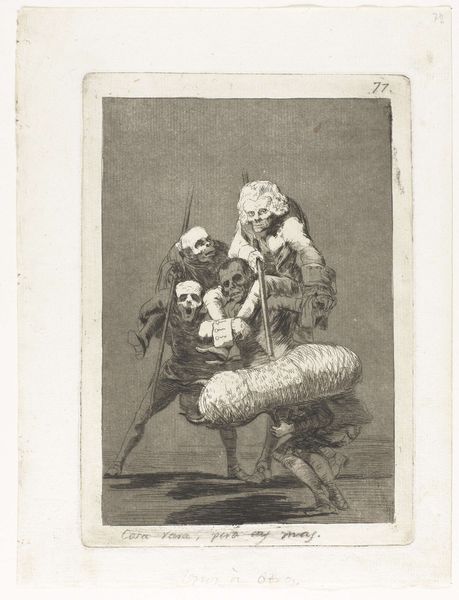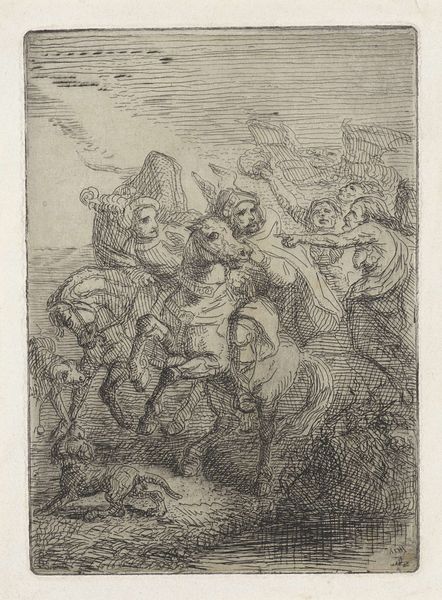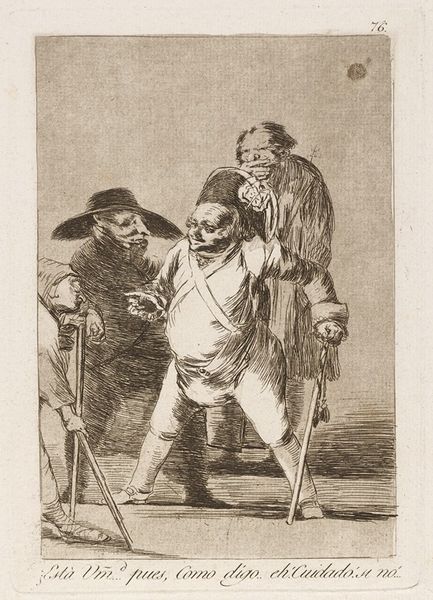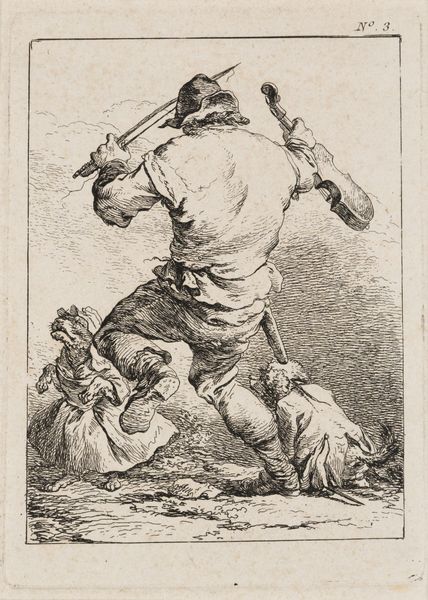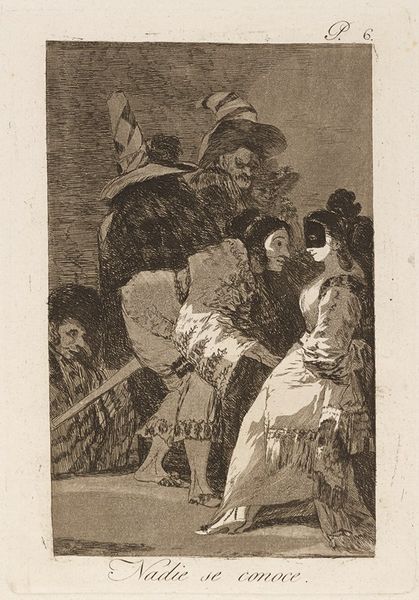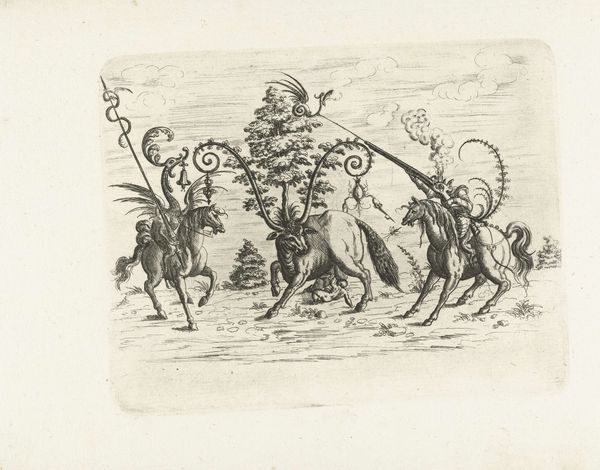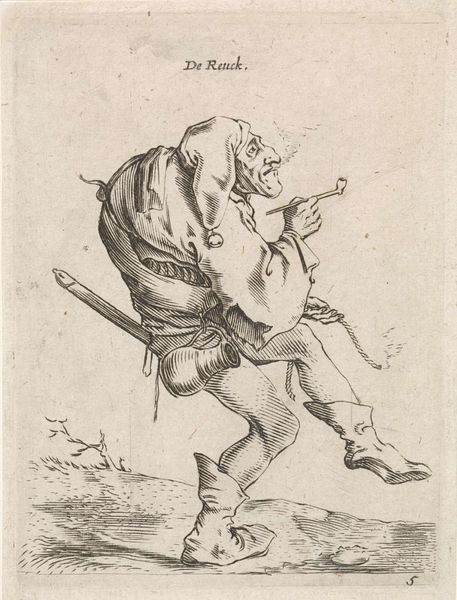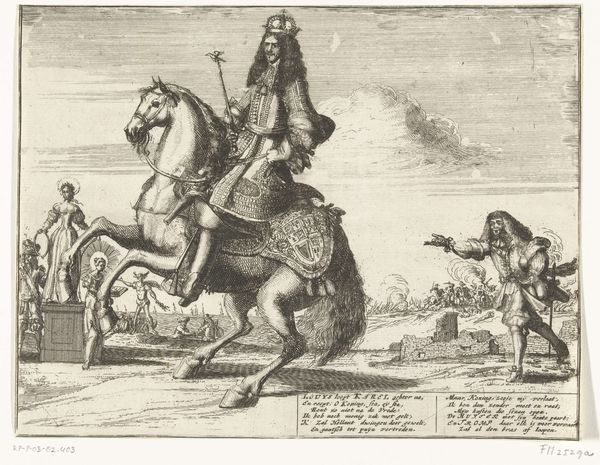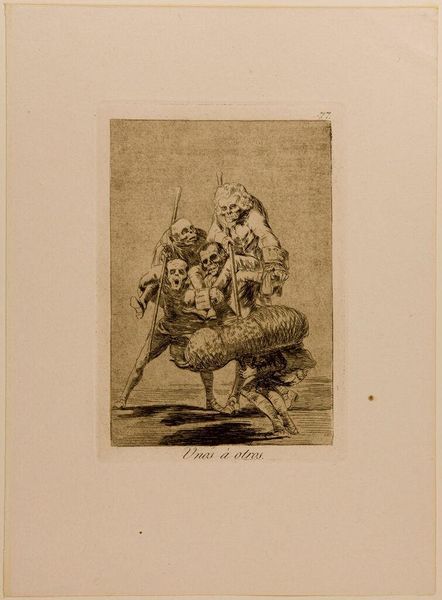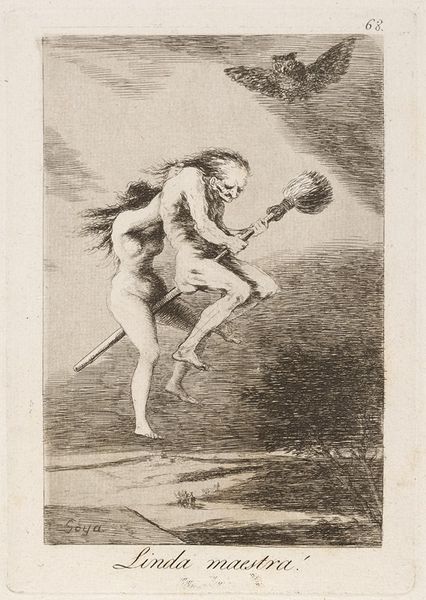
aquatint, print, etching
#
aquatint
#
allegory
#
narrative-art
# print
#
etching
#
caricature
#
figuration
#
personal sketchbook
#
romanticism
Copyright: Public Domain: Artvee
Editor: Goya’s etching and aquatint, "Unos á otros," made between 1796 and 1797, is certainly striking! It features this strange pile of figures with skull-like faces. It looks like a disturbing social commentary, but on what exactly? How do you interpret this work, considering the historical context? Curator: Goya created this during a turbulent time in Spain, rife with social and political upheaval. I see this image as a scathing critique of the established social hierarchy. Look closely. Do you notice how the skeletal figures are supporting one another, quite precariously? Editor: Yes, it’s almost like a macabre pyramid scheme! They seem to be using each other for support. Curator: Precisely! That illustrates a corrupt system where individuals, particularly those in power, rely on those beneath them, perpetuating inequality. This etching implicates institutions, including perhaps the Church or the aristocracy. How do you think the grotesque style contributes to its message? Editor: The skeletal features definitely amplify the sense of decay and moral corruption within that social structure. It is pretty powerful, really! Curator: It certainly is. Also note how printmaking allowed Goya to circulate these critiques widely, directly engaging a public audience in ways paintings of the era rarely could. What strikes me is how relevant the image remains today. Editor: Absolutely. It's amazing how a work made centuries ago can still spark conversations about power and societal structure. Curator: Goya clearly wanted this work to force reflection, and indeed, it has certainly stood the test of time as a potent work. I really appreciate the contemporary social resonance we can draw from his work.
Comments
No comments
Be the first to comment and join the conversation on the ultimate creative platform.
